자연금(Native Gold in a quartz)10070502 

| 국내/해외배송 | |
|---|---|
| 배송비 방법 | 택배 |
| 배송비 | 4,000원 (50,000원 이상 구매 시 무료) |
| 수량 |
|
| 상품 정보 | 가격 | 삭제 |
|---|---|---|
| [총 상품금액(수량)] 0 (0개) | ||
일반명 : 자연금(Native Gold in a quartz)
학명 : Gold
광산명 : Olinghouse Mine
Dims : 2.4x2.3x2.2cm
Loc : Washoe County, Nevada, USA
A crevice in a gray-green host rock is filled with wire-like jumbled crystals of gold. It looks like a gold variety of steel wool, except under a loupe the individual crystals often appear to have crystal faces and a dense branching form, instead of simple wires as in the case with steel wool. There are also tiny quartz crystals present, on several sides of the specimen. The crevice that contains the gold passes completely through the specimen, and I am certain that only a fraction of the gold is visible.
THE MINERAL NATIVE GOLD
• Chemistry : Au, Elemental gold
• Class : Elements
• Group : Gold
• Uses : Major ore of gold and as mineral specimens.
Gold is a pleasure to own and possess, as many people have discovered throughout the ages and around the world. Gold is a very stubborn element when it comes to reacting to or combining with other elements. Keeping this in mind helps to explain many things about gold. There are very few true gold ores, besides native gold, because it forms a major part of only a few rare minerals, it is found as little more than a trace in a few others or it is alloyed to a small extent with other metals such as silver. Gold is almost indestructible and has been used and then reused for centuries to the extent that all gold of known existence is almost equal to all the gold that has ever been mined. Gold is a great medium metal for jewelry, as it never tarnishes. Native gold wires emerging from massive white quartz can make for a visually stunning specimen.
A few of the minerals that bear gold in their respective formulas are in a subclass of sulfides called the tellurides. The element gold seems to have an affinity for tellurium and this is one of the only elements that gold can bond with easily. In fact only a few rare tellurides are found without gold. A few of the tellurides are nagyagite, calaverite, sylvanite and krennerite. These are all minor ores of gold and their contributions to the supply of gold pales next to native gold's own contribution. Occasionally these minerals are associated with native gold.
There are a number of minerals that are aptly named "Fool's Gold" because only a fool could believe they are gold! Actually, it is easy for people who see shiny golden colored flakes sparkling at them from some rock they just picked up to believe that they have struck pay-dirt. Gold's ductility, sectility, density and softness are usually sufficient to distinguish it from the much cheaper imposters. The most famous "fool's gold" is the very common sulfide, pyrite. Chalcopyrite, marcasite and just about any golden colored sulfide has been also proven to be worthy the "fool's gold" moniker. Weathered flakes of biotite which can sport a bright yellow color and a nice flash of light when viewed just right have also been mistaken for gold.
Gold specimens are sometimes artistically stunning and a good investment as well. After all, it is gold, which never seems to lose its value. Good natural specimens are more expensive than their actual weight value. This is to be expected as good gold crystals are somewhat scarce (most are disolved, crushed, or melted down as part of the mining process) and the only justification for preserving a specimen is the expectation that it will bring a higher price in its natural state.
PHYSICAL CHARACTERISTICS:
• Color is golden "butter" yellow.
• Luster is metallic.
• Transparency is opaque.
• Crystal System is isometric; 4/m bar 3 2/m
• Crystal Habits include massive nuggets and disseminated grains. Also wires, dendritic and arborescent crystal clusters.
• Cleavage is absent.
• Fracture is jagged.
• Streak is golden yellow.
• Hardness is 2.5 - 3
• Specific Gravity is 19.3+ (extremely heavy even for metallic minerals)
• Associated Minerals include quartz, nagyagite, calaverite, sylvanite, krennerite, pyrite and other sulfides.
• Other Characteristics: ductile, malleable and sectile, meaning it can be pounded into other shapes, stretched into a wire and cut into slices.
• Notable Occurrences include California and South Dakota, USA; Siberia, Russia; South Africa; Canada and other localities around the world.
• Best Field Indicators are color, density, hardness, sectility, malleability and ductility.




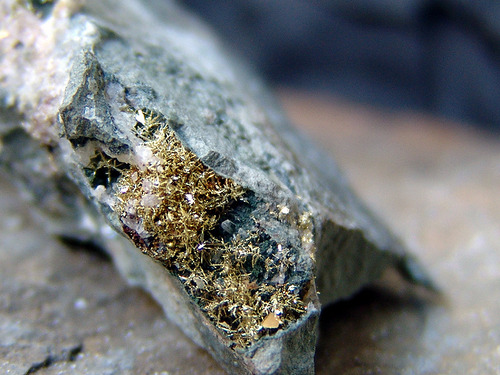
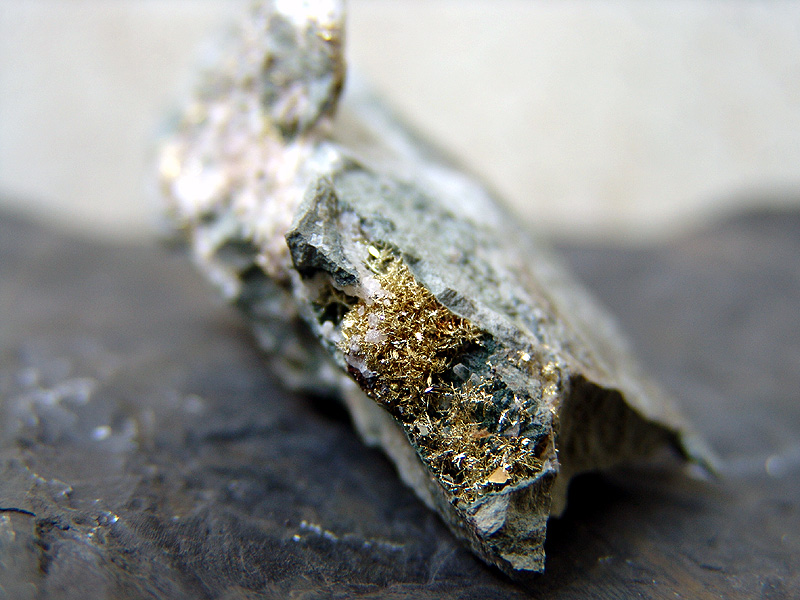
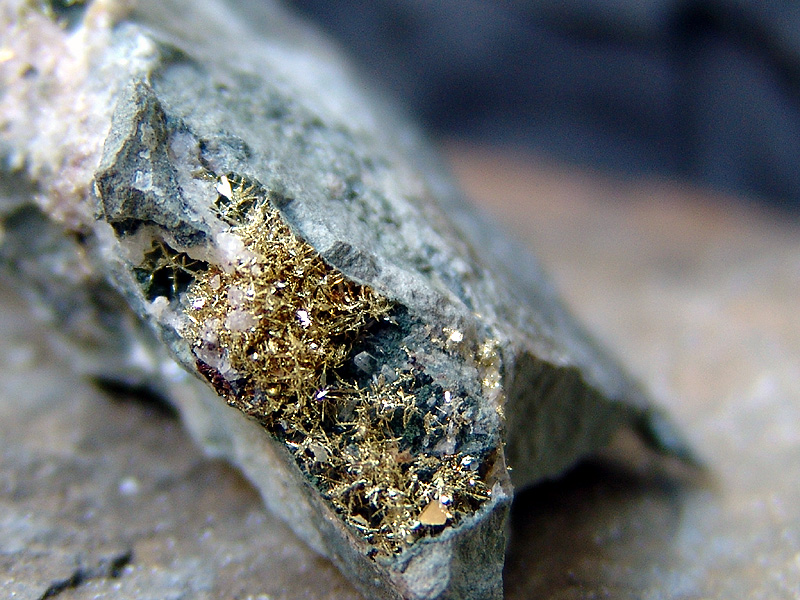

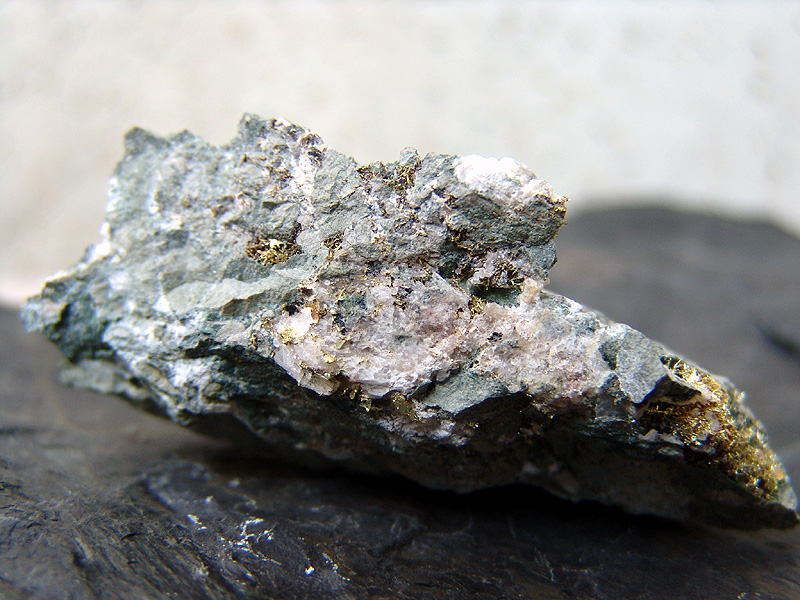









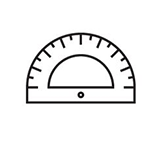
 확대보기 및 상세정보
확대보기 및 상세정보